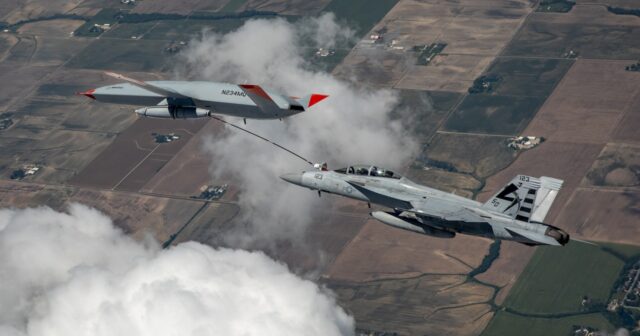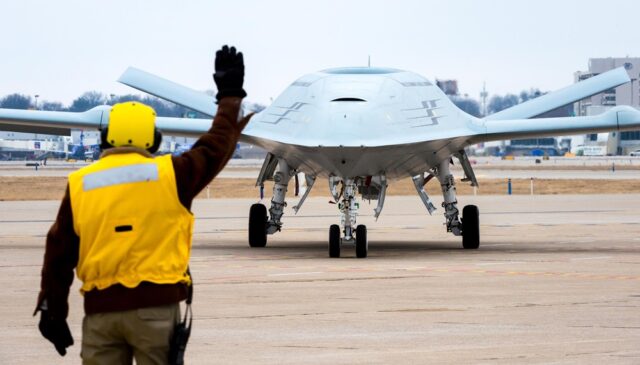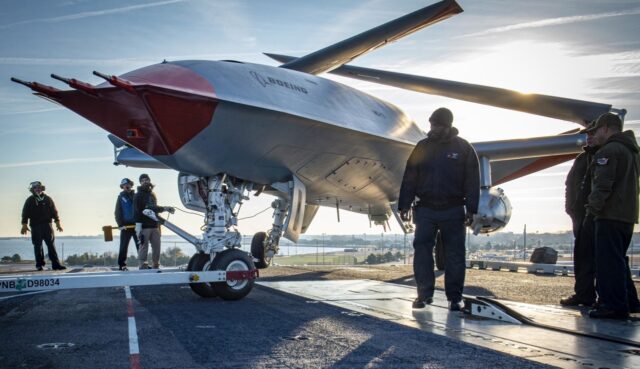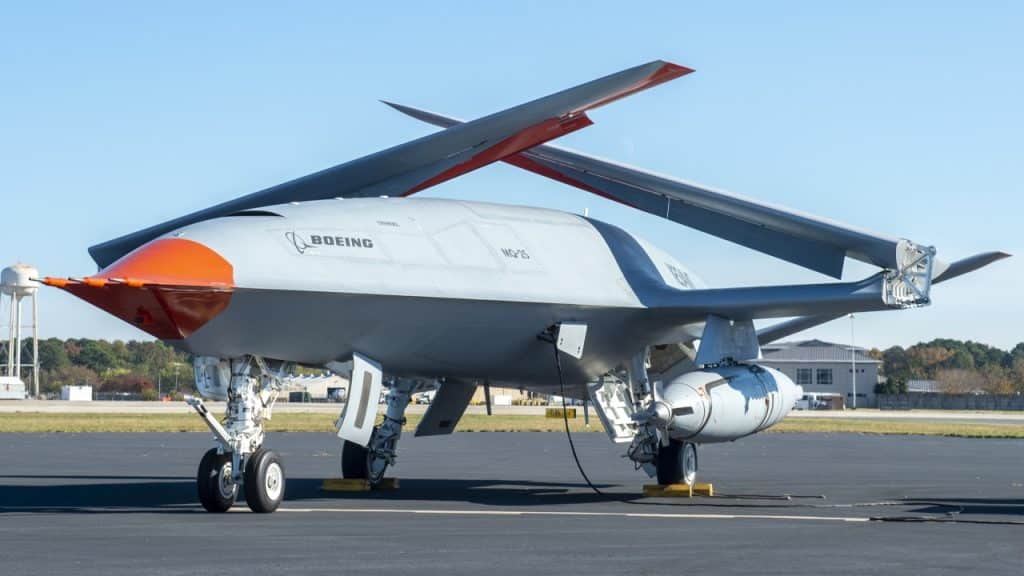The MQ-25 Stingray unmanned aerial vehicle is gaining recognition in the field for which it was created – as a flying tanker. Its producer, Boeing, announced from the very beginning that when the design would become more mature, work on adapting the MQ-25A to other tasks would begin. We have apparently reached this point. Boeing has revealed that it has conducted a virtual demonstration of the Stingray’s operation as a reconnaissance aircraft with US Navy manned machines.
Boeing’s BD Gaddis confirmed in an interview with Defense News that a virtual lab demonstration in May proved that three types of aircraft could instruct Stringray to perform reconnaissance missions and then receive real-time images from it. The drone was paired with two other Boeing planes – the F / A-18E / F Super Hornet Block III and P-8A Poseidon – as well as the E-2D Advanced Hawkeye early warning and control aircraft
-ADVERTISEMENT-

Several different operational scenarios were tested. The basic procedure was that the Stingray took off from the carrier under the control of the ship’s control station, announced its availability to nearby planes, and was then taken over by one of the three types above. The crew then provided the drone with instructions for the reconnaissance and reconnaissance mission, including any restrictions, such as the boundaries of no-fly zones.

First refueling of the F / A-18F in flight with the MQ-25, 2021.
(Boeing)
Gaddis also revealed that the trials used a real Super Hornet Block III cockpit, allowing prominent visitors to the lab during the four-day trial cycle to easily observe the pilot taking control of the drone. According to Gaddis, the pairing with the naval P-8A patrol plane, in which both machines could interact over a distance of 300 nautical miles, was also very promising.
In the latter case, it is easy to see the similarity to the cooperation between the Poseindons and the MQ-4C Triton unmanned aerial vehicles described by us two days ago. Both pairs want the drone to increase the area of the Poseidon surveillance area, while the P-8A operators closer to the battlefield can more effectively control the drone’s operation.
The MQ-25 is designed for autonomous flying, but should remain in constant contact with the air vehicle operator on the ground or on board the ship. The flight plan is entered into the drone’s memory before take-off.
The May rehearsals were already the second cycle of virtual demonstrations of this kind. Last year, virtual refueling in the air was carried out on the same principle – the Stingray took off from an aircraft carrier controlled by on-board operators, but in the air, the crews of Super Hornets and Hawkeye took control, which, via the Link 16 data link, themselves indicated the place and time of the meeting to the drone. to transfer fuel. The US Navy has already announced that the MQ-25 will remain primarily a flying tanker, and that any reconnaissance and reconnaissance tasks will be of secondary importance.

The Stingrayes will be the first large drones to operate from aircraft carriers.
(Boeing)
Ultimately, the US Navy plans to order over seventy MQ-25s (which will cost around $ 13 billion). They are to take over all air refueling tasks currently performed by Super Hornets, which of course will release the latter for combat tasks. The unmanned aerial vehicle is to extend the time spent in the air of on-board F-35C and F / A-18E / F fighters, EA-18G radio-electronic warfare machines and E-2D early warning aircraft.
The US Navy assumes that the Stingray will achieve initial operational readiness as a flying tanker under an aircraft carrier air wing in 2025. Boeing wants the Pentagon to learn about the MQ-25’s wide range of capabilities before that date, which in turn may give impetus to finding drones of this type of additional activity, and thus for larger orders.

MQ-25 during trials aboard the USS George HW Bush (CVN 77) last December.
(US Navy / Mass Communication Specialist 3rd Class Brandon Roberson)
– According to today’s assumptions, the future airline wing is to have a ratio of manned to unmanned aerial vehicles 60 to 40, but over time the proportions will change to 40 to 60 in favor of unmanned aerial vehicles – said Rear Admiral Gregory Harris, director of the aviation department at the head of naval operations of the US last year Navy. – Much will depend on the success of the implementation of the MQ-25 flying tankers and our ability to efficiently and safely manage the traffic of a large number of drones in the space around the aircraft carrier and on the aircraft deck.
Boeing won the tender for an unmanned aerial vehicle tanker for the US Navy in August 2018. His Stingray triumphed over the designs developed by Lockheed Martin and General Atomics, a company experienced in drone production. The T1 prototype made its maiden flight on September 19, 2019 from the regional MidAmerica St. Louis, Illinois.
See also: The ejection seat crisis has grounded most of the F-35s and hundreds of other aircraft
US Navy / Mass Communication Specialist 2nd Class Sam Jenkins

